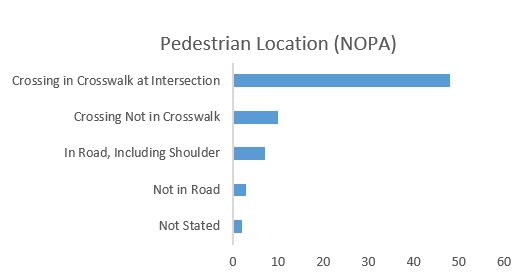In 2020, 235 San Franciscans tragically died due to COVID-19. In the same time period, SF saw nearly three times as many deaths (699) from accidental drug overdoses. Policies such as social distancing, which have saved so many lives by ebbing the spread of COVID-19, may have contributed to social isolation and reduced the likelihood of people being revived from an overdose.
Though these crises may feel disconnected, the solutions to both should be viewed as complementary, rather than competing, public health priorities. As a society we’ve proven our ability to mobilize relatively effective measures to control/reduce Covid-19 deaths; we need to use the same level of urgency and public health investment to combat the Opioid Epidemic and its growing fatalities.
Approximately 500 (or two-thirds) of the overdose deaths in San Francisco in 2020 were caused by Fentanyl. Fentanyl, an increasing cause of overdose deaths throughout the US, is roughly 25-50 times stronger than heroin and is often mixed into heroin bags or other pills – catching even experienced drug users by surprise. Due to its low price and decentralized sources, Fentanyl has proven difficult to target using traditional criminal enforcement mechanisms. Rather than address these failures exclusively through enforcement reform, it’s critical to adopt a more holistic approach centered on health and emphasizing proven solutions over social stigma.
So what would a public health approach to preventing drug deaths look like? The CDC and organizations like the Drug Policy Alliance advocate a number of approaches including:
- readily available testing kits (to identify Fentanyl)
- data and emerging technologies – from tracking safe drugs supplies, to monitoring over-prescription and guiding decision-making for physicians
- treatments such as Methadone and/or buprenorphine to address addiction at the point of care
- access to Naloxone (aka Narcan) which treats narcotic overdose in an emergency situation
In 2020 alone, trained community members (including users and family members) in SF were able to reverse at least 2,600 overdoses with Narcan. The question is not whether these policies are effective, it is how can we make them more readily available?
One obvious answer is to incorporate these services into other health facilities such as emergency rooms or Navigation Centers and to create dedicated locations such as needle exchanges or even better, safe injection sites to test, treat, and trace. Safe injection sites like those in Europe and Canada, which have been proposed by SF elected officials like Senator Scott Weiner and Mayor Breed (whose sister died of an overdose), have been shown to prevent overdose deaths, reduce the spread of diseases like hepatitis C and HIV, and help get users into treatment.
While maintaining the same urgency and coordination we’ve used to prevent COVID-19 deaths, we need to shift from an overly-criminalized focus on enforcement and supply reduction to one characterized by regulation and harm reduction. These solutions require both public backing and investment – a meaningful first step is to support progressive legislation (proposed by SF’s own Scott Weiner) which can make meaningful change.
Sources
- SF Chronicle, “2020 was S.F.’s deadliest year for overdoses, by far.” Link
- SFIST, “SF Saw Triple the Number of Overdose Deaths Than COVID-19 Deaths in 2020.” Link
- NPR, “’We Are Shipping To The U.S.’: Inside China’s Online Synthetic Drug Networks.” Link
- CDC, “Evidence-Based Strategies for Preventing Opioid Overdose: What’s Working in the United States.” Link
- Homeland Preparedness News, “San Francisco Police Department cites Naloxone success in reducing opioid overdoses.” Link
- Drug Policy Aliance, “Key Harm Reduction Issues.” Link
- Deloitte, “Strategies for stemming the opioid epidemic.” Link

